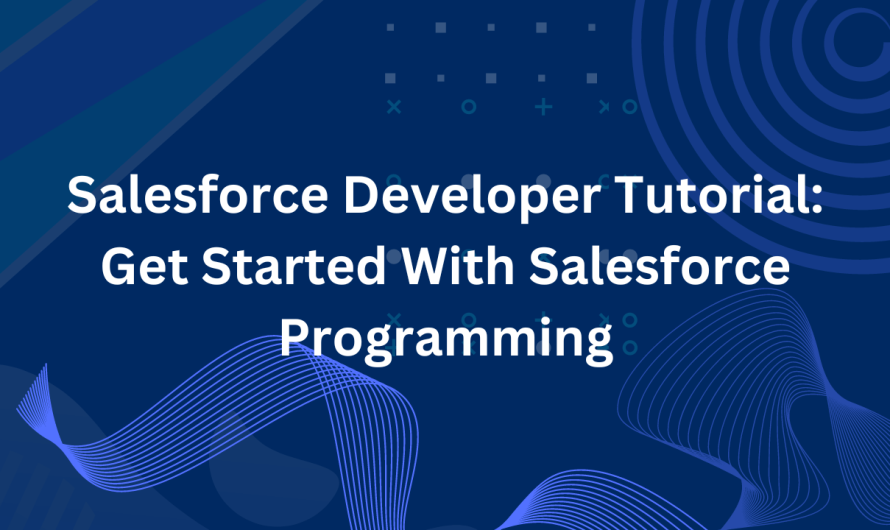The world of Salesforce offers a dynamic and robust platform for developers to build customized solutions that drive business processes and enhance productivity. This tutorial is designed to provide a comprehensive overview for developers looking to delve into Salesforce development, covering the basics to advanced concepts.
Getting Started with Salesforce Development
Salesforce development involves a variety of tools and technologies designed to support the customization and functionality of the Salesforce platform. Aspiring Salesforce developers should begin by understanding the Salesforce platform basics and how to set up their Salesforce development environment.
Understanding the Salesforce Architecture
Before diving into code, it is crucial to understand the architecture of Salesforce. This includes familiarity with the multitenant environment, metadata-driven development model, and the use of declarative vs. programmatic tools. Knowing how Salesforce manages data and processes requests allows developers to design efficient applications.
Core Development Skills in Salesforce
Salesforce developers need a broad set of skills ranging from understanding the Salesforce object database to programming in Apex, Salesforce’s proprietary Java-like programming language. Mastery of Visualforce and Lightning Components is essential for creating custom user interfaces.
Developing with Apex and Visualforce
Apex is a strongly typed, object-oriented programming language that allows developers to execute flow and transaction control statements on the Salesforce platform server in conjunction with calls to the API. On the other hand, Visualforce is a framework that allows developers to build sophisticated, custom user interfaces that can be hosted natively on the Salesforce platform.
Advanced Salesforce Development Techniques
As developers advance their skills, they will encounter more complex scenarios requiring intricate solutions. This includes integrating Salesforce with external APIs, implementing advanced business logic, and managing large data volumes efficiently within Salesforce.
Utilizing Lightning Components for Responsive Applications
Lightning Components are a modern framework for building dynamic Salesforce applications for mobile and desktop devices. Developers need to understand the Lightning Component framework to create apps that are both powerful and easy to use. This involves using JavaScript on the client side and Apex on the server side to build responsive applications.
Best Practices in Salesforce Development
To ensure success in Salesforce development, adhering to best practices is crucial. This includes writing clean, maintainable code, understanding and implementing Salesforce’s security model, and using Salesforce’s built-in testing framework to test applications.
Debugging and Deployment
Debugging in Salesforce can be challenging due to its multitenant architecture and various layers of abstraction. Developers must become proficient with debugging tools like the Developer Console and debug logs. Deployment of applications involves moving metadata between different environments, for which developers must be adept at using Salesforce DX or change sets.
Conclusion
This Salesforce Developer Tutorial has provided a foundational framework for beginning and advancing in Salesforce development. By embracing the extensive set of development tools and adhering to best practices, developers can build powerful and efficient applications on one of the world’s leading enterprise platforms. Whether you are developing custom applications, integrating third-party applications, or optimizing existing systems, Salesforce offers a rich and versatile environment for technical innovation and career growth.



